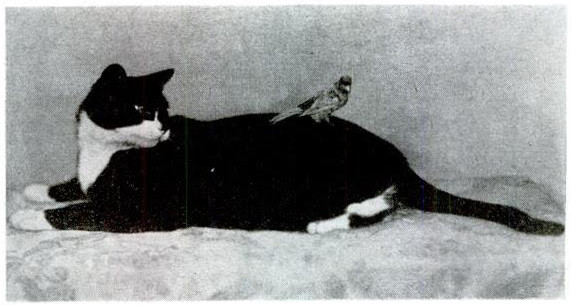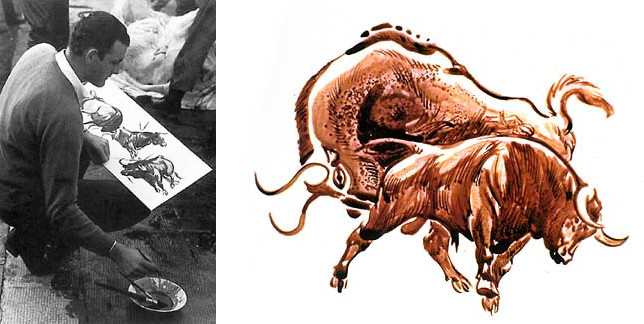
One of the most famous cat-and-bird friendships on record was that between Caruso, a canary which belonged to President Coolidge, and Timmie, a black-and-white cat owned by Bascom Timmons, a Washington newspaperman. They became acquainted when Timmons took his cat to the White House, and Coolidge eventually sent the canary to Timmons’ home to live with the cat. After that they spent an hour or two every day together, the canary walking up and down the cat’s back or resting between his paws. According to Timmons, the canary fell over dead while singing to the cat.
— Roger Butterfield, “Cats,” LIFE, April 22, 1946






